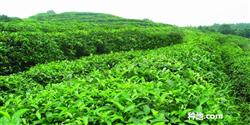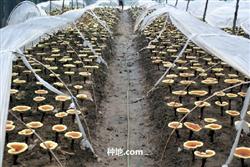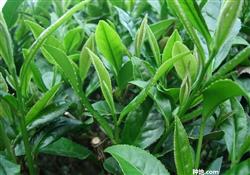How to control diseases and insect pests of pollution-free tea?

How does pollution-free tea prevent pests? please guide The development of integrated pest management technology ensures high quality and high yield of tea production, but there are some problems to be solved urgently, especially the development of pollution-free tea production, which puts forward higher requirements for pest control. Fauna Changes and Causes of Diseases and Pests in Tea Plantation 1. The floristic variation characteristics of tea pests and diseases in China in the past half century showed the following characteristics: 1)From large pests to small pests such as aphids, mites, scales, thrips, leafhoppers) direction succession; 2)From chewing mouthparts pests to sucking-type pests; 3)From pests with fewer generations and lower reproduction rate to pests with more generations and higher reproduction rate; 4)The insect pests that are easy to contact pesticides are hidden from the habitat (such as rolled leaves, hidden leaves, wax shells or shell protection), and the insect pests that are not easy to contact pesticides are in succession. The variety of tea plant diseases was not as obvious as that of tea plant pests. Analysis on the causes of the succession of 2 flora 1)Adaptability to the ecological environment. Each species has a degree of stability over long periods of adaptation to its environment, but also a degree of plasticity, so that it can settle and reproduce in new areas. For example, tea inchworm due to its 1.- There is obvious synchronization between the hatching period of the second generation and the development period of tea buds, and there are many generations in the whole year. Therefore, besides being an important pest in the history of Zhejiang Province, the insect has spread to Jiangsu, Anhui and Hunan provinces, and its occurrence range has gradually expanded, which is related to its strong adaptability to ecological environment. 2)Changes in cultivation techniques. The change of cultivation measures changed the habitat environment of pest and disease flora, thus leading to the change of pest and disease flora. Such as tea garden to the mid-mountain area, mountain development, so that small green leafhopper, tea white star disease and other populations to develop. A large amount of nitrogen fertilizer changed the amino acid composition of tea buds and leaves, which increased the number of tea scale, mite and tea leaf disease. The extension of leaf picking technology in the 1960s provided a spawning site for tea leaf moth, which caused the insect to occur in large numbers nationwide since the mid-1970s. The development of famous tea in the 1990s required higher picking tenderness, which made the tender stem with a large number of eggs of green leafhopper remain on the tree, thus aggravating the occurrence degree of leaf hopper. 3)Irrational use of chemical pesticides. The non-selective toxicity of chemical pesticides not only kills pests, but also kills natural enemies, which leads to the rampant occurrence of some pests. For example, the rampant occurrence of scales in tea gardens in China in the mid-1960s is related to the extensive use of organochlorine pesticides (BHC and DDT) since the 1950s. Similarly, the widespread use of organophosphorus pesticides since the early 1960s has led to a decline in the number of scales susceptible to organophosphorus pesticides, but because they have strong lethality to mites, they have weak lethality to mites, especially to mite eggs. As a result, tea mites have become rampant in the country since the late 1960s. These are two distinct population successions in China since the 1950s. Current Problems in the Control of Tea Diseases and Pests Judging from the requirements for the prevention and control of tea plant diseases and insect pests under the current new situation, there are several problems as follows: 1. There are still no new effective control techniques for some major tea plant diseases and insect pests. Although there are effective control techniques for major tea plant diseases and insect pests, many developed countries have formulated new maximum residue limits (MRL) standards for pesticides in tea before China's accession to WTO, which limits some of the techniques used for many years. For example, Empoasca pseudoophthalmus, the most important pest species in tea production, has been controlled by chemical control for a long time. The effect of dimethoate used for a long time is decreasing day by day in many areas, and the MRL of dimethoate is gradually becoming strict abroad. Fenvalerate is an important pesticide used to control green leafhopper in tea garden since 1980s. Since November 1999, it has been banned in tea production by the Ministry of Agriculture. The popularization of quality tea makes the picking standard more and more tender, so that more tender stems are left on the tree. Compared with the old picking standard, which can collect a large number of leafhopper eggs, this actually weakens the agricultural control of green leafhopper. Bemisia spinifera is a dominant pest in many tea gardens since 1990's. Buprofezin (Euprofezin, Prochloraz), which has been widely used for a long time, can only be stopped in tea gardens because MRL is 0.02mg/kg in the new standard of EU. Before 1980s, Lymantria sinensis only occurred sporadically in some places, and its damage was not serious on the whole, but its occurrence area became larger and larger from the end of 1990s, and effective control measures were still lacking. Except for tea pests, chemical control methods have been adopted since Changming. Because MRL standards of common fungicides are very strict, comprehensive control measures to reduce chemical pesticide dosage should be put forward as soon as possible. 2. The excessive rate of pesticide MRL in tea is very high, which affects the export of tea. The residue of DDT and HCH in tea in China was once a serious problem affecting tea export in the 1960s and 1970s. Under the attention of governments at all levels, the safe and rational use of pesticides and integrated pest control techniques have been implemented. Therefore, since the mid-1980s, the problem of pesticide residues in tea has been fundamentally solved. More than 98% of the tea exported and more than 95% of the tea sold in China meet the international and domestic allowable standards respectively. However, on the eve of China's accession to WTO, some developed countries, especially EU countries, have successively expanded the inspection scope of pesticides MRL in tea from only 6 pesticides in the past to nearly 100 pesticides, and at the same time greatly reduced MRL values. For example, the MRL of fenvalerate in tea was 10 mg/kg before July 1, 2000, and changed to 0.1 mg/ kg after July 1, 2000. The minimum detection level standard for many pesticides was 0.02 mg/kg. Therefore, in 2000, the pesticide residue in tea caused a high rate of excessive phenomenon. It must be noted that this excess is calculated according to the new standards of the European Union, and if calculated according to the standards promulgated by our country, most of the tea still meets the standards. According to the test results, fenvalerate, fenpropathrin and eulex had the highest over-standard rate. This phenomenon of exceeding the standard is obviously improving under the attention of governments at all levels. Lack of technologies and pesticides suitable for pollution-free production With the progress of society and the development of science and technology, people have higher requirements for food safety. The production of pollution-free tea has been regarded as government behavior in the new century and will be regarded as market access standard in a few short years. At present, pollution-free tea production has become a hot spot in all tea-producing provinces in China. However, many technical problems in pollution-free tea production have not been solved, and it is urgent to solve how to use less or no pesticides in pest control. It can be expected that there will be an increased use of biological control, both biopesticides and phytochemicals. However, up to now, these technologies and products are far from meeting the needs of pollution-free tea production in terms of quantity and quality, and no biological pesticide preparation that can be mainly used for tea plant disease and insect control has been registered. Integrated Control of Tea Pests and Diseases in the New Century The Ministry of Agriculture has proposed in 2000 that pollution-free products will be the goal and requirement of tea production and the market standard of tea products in the future. Therefore, the idea of integrated control of tea diseases and insect pests should also be put forward with this goal. It is necessary to consider the overall balance of tea garden ecosystem, not only the control objects, but also the future and environmental protection, not only the current benefits and benefits, but also the long-term impact and consequences. The measures should consider no or less use of chemical pesticides, but should strengthen agricultural control and biological control. In particular, the following aspects should be strengthened. 1. Improve tea garden environment and give full play to natural regulation ability of tea garden Tea garden is the habitat of harmful organisms and beneficial organisms in tea plantation. To maintain the ecological balance of tea plantation environment and attach importance to the ecological environment around tea plantation, in order to maintain and improve the dense canopy density of tea plantation and afforestation around tea plantation, it is helpful to the biodiversity of tea plantation ecosystem and exert the natural regulation ability of tea plantation to achieve the balance of biological populations in tea plantation ecosystem. This is the essential external ecological condition for implementing good integrated control. 2. Based on agricultural control, strengthening ecological regulation Agricultural control based on field cultivation and management will play an increasingly important role in the control of harmful organisms in pollution-free tea production because it is a mild regulation measure with the main goal of changing the habitat of tea garden ecosystem. When developing new tea gardens, we should pay attention to selecting and matching different clone varieties, and pay attention to selecting clone varieties with high resistance to local main diseases and insect pests. Picking can reduce the occurrence of green leafhopper, tea aphid and tea mite. Fertilization is closely related to the occurrence of diseases and pests. In recent 20 years in Japan, high nitrogen fertilizer application resulted in tea anthracnose epidemic and root rot serious occurrence. In addition, partial application of nitrogen fertilizer will change the amino acid composition of tea buds and leaves, increase the proportion of acidic amino acids, which is conducive to the occurrence of piercing-sucking mouthparts pests (such as scales and mites). Organic fertilizer application can increase the content of middle and alkaline amino acids, which is not conducive to the occurrence of aphids, scales and mites. Therefore, through the application of agricultural technical measures to improve ecosystem functions, and then play a role in controlling the occurrence of diseases and pests, receive twice the result with half the effort. 3. Strengthening biological control, protecting and utilizing natural enemy resources Beneficial organisms are another trophic level in tea garden ecosystem besides tea trees and harmful organisms. It has the characteristics of strong specificity and no pollution to the environment, and is also a powerful means of ecological regulation of tea pests. In the process of pollution-free tea production, strengthening biological control and reducing the amount of chemical pesticides have important significance. Biological control includes beneficial microorganisms, viruses, parasitic natural enemies and predatory natural enemies. More than 20 species of beneficial microorganisms have been successfully used in the control of tea diseases and insect pests, such as Rhizoctonia thuringiensis, Beauveria bassiana, Aphids, Helminthosporium weberi and Helminthosporium. Aegerita weberi, isolated and successfully propagated on whitefly Aleurocanthus spiniferus in 1990s, is an Aegerita strain first applied to pest control at home and abroad. After extensive application in Fujian and Zhejiang provinces, the field control effect is over 70% and the effect lasts at least 3 years. The application of insect viruses in the control of tea pests has been very successful. 63 insect viruses have been isolated from more than 40 tea pests in China, including 38 nuclear polyhedrosis viruses, 17 granulosa viruses, 5 cytoplasmic polyhedrosis viruses and 3 non-inclusion viruses. Tea geometrid NPV virus and tea caterpillar NPV virus have been widely used in China. Parasitic insects used in tea pest control include Trichogramma (against eggs of tea leaf roller and tea caterpillar) and Apanotis (against larvae of tea looper). In addition, a variety of predatory natural enemies (including ladybugs, laceflies, spiders, predatory mites) play an important role in natural control of various scales, tea aphids, green leafhoppers. Chemical control has the characteristics of high efficiency and quick effect, but it also has the disadvantages of environmental pollution, pesticide residue, drug resistance formation and pest recurrence. In the current call to realize pollution-free tea production, although it does not completely exclude the use of chemical pesticides, it also puts forward higher requirements. First of all, in the principle of pesticide use, emphasis should be placed on minimizing the amount of chemical pesticides. The requirements for pesticides do not emphasize their "killing" effect, but pay more attention to "regulation." Control should be carried out according to the economic threshold, and spraying should not be carried out below the threshold. Secondly, in the selection of pesticides, we should choose pesticides with high efficiency, easy degradation, strong selectivity and low solubility in water. Pesticides should be selected according to the maximum residue limits (MRL) in tea currently prescribed by major tea importing countries. Ban the use of dicofol, fenvalerate and methamidophos in tea production and stop the use of pesticides such as fenpropathrin, buprofezin, mirex and acephate. Promote the use of biological pesticides such as Su Yun Jin Gan fungus preparation (Tianba), Beauveria bassiana, tea looper NPV virus and plant pesticides such as rotenone and matrine, and rationally use stone sulfur mixture. According to the MRL standard stipulated by the European Union, when chemical pesticides must be used, insecticides such as cydan, phoxim, malathion, bifenthrin, deltamethrin, cypermethrin and imidacloprid, and acaricide varieties such as paracetamol and tetrafenazine can be selected. Third, pesticides should be used in strict accordance with the prescribed dosage and safety interval standards, and attention should be paid to the quality of pesticide application to avoid large losses of pesticides. The rotation of pesticides should be encouraged. In addition to biological pesticides and botanical pesticides, no chemical synthetic pesticides may be used in organic tea gardens. Click to get more tea planting technology Click to get more flower planting technology Click to return to farming network
- Prev

Can Ganoderma lucidum be cultivated with mulberry branches?
Can Ganoderma lucidum be cultivated with mulberry branches? What should we pay attention to the differences between mulberry branch cultivation of Ganoderma lucidum and general cultivation methods of Ganoderma lucidum mainly in: Ganoderma lucidum strain, culture material formula and cultivation period, cultivation mode and so on. 1. Ganoderma lucidum strains were screened from Guangdong and Fujian.
- Next

How to use bio-pesticides in tea?
How to use bio-pesticides in tea? Please guide the current tea market, especially the tea export, which requires high quality and safety of tea. And biological pesticides, including microbial pesticides and botanical pesticides, they will not cause pollution to tea and the environment, and their toxicity to people and animals is very low, so they will not constitute residual toxicity.
Related
- Fuxing push coffee new agricultural production and marketing class: lack of small-scale processing plants
- Jujube rice field leisure farm deep ploughing Yilan for five years to create a space for organic food and play
- Nongyu Farm-A trial of organic papaya for brave women with advanced technology
- Four points for attention in the prevention and control of diseases and insect pests of edible fungi
- How to add nutrient solution to Edible Fungi
- Is there any good way to control edible fungus mites?
- Open Inoculation Technology of Edible Fungi
- Is there any clever way to use fertilizer for edible fungus in winter?
- What agents are used to kill the pathogens of edible fungi in the mushroom shed?
- Rapid drying of Edible Fungi

